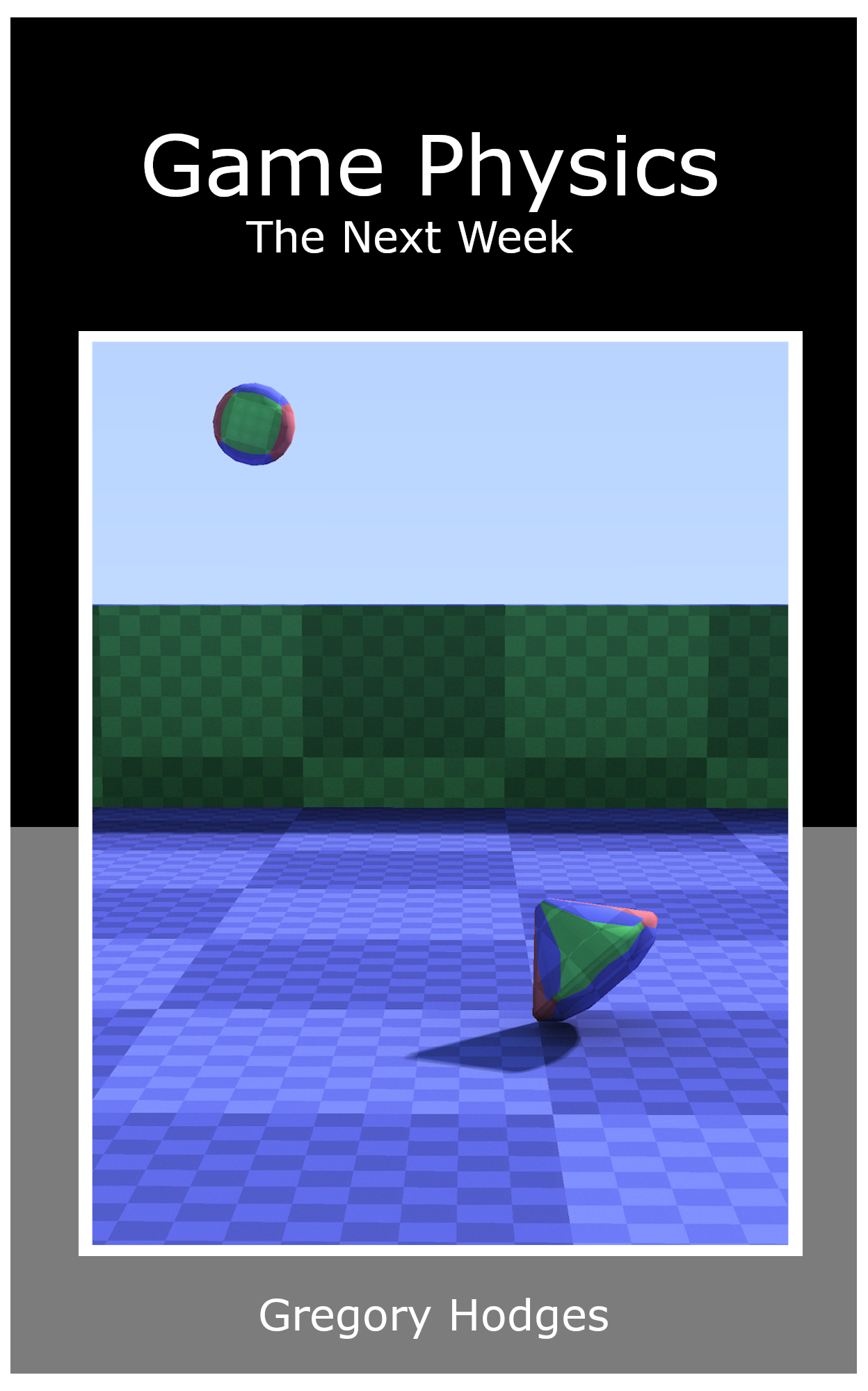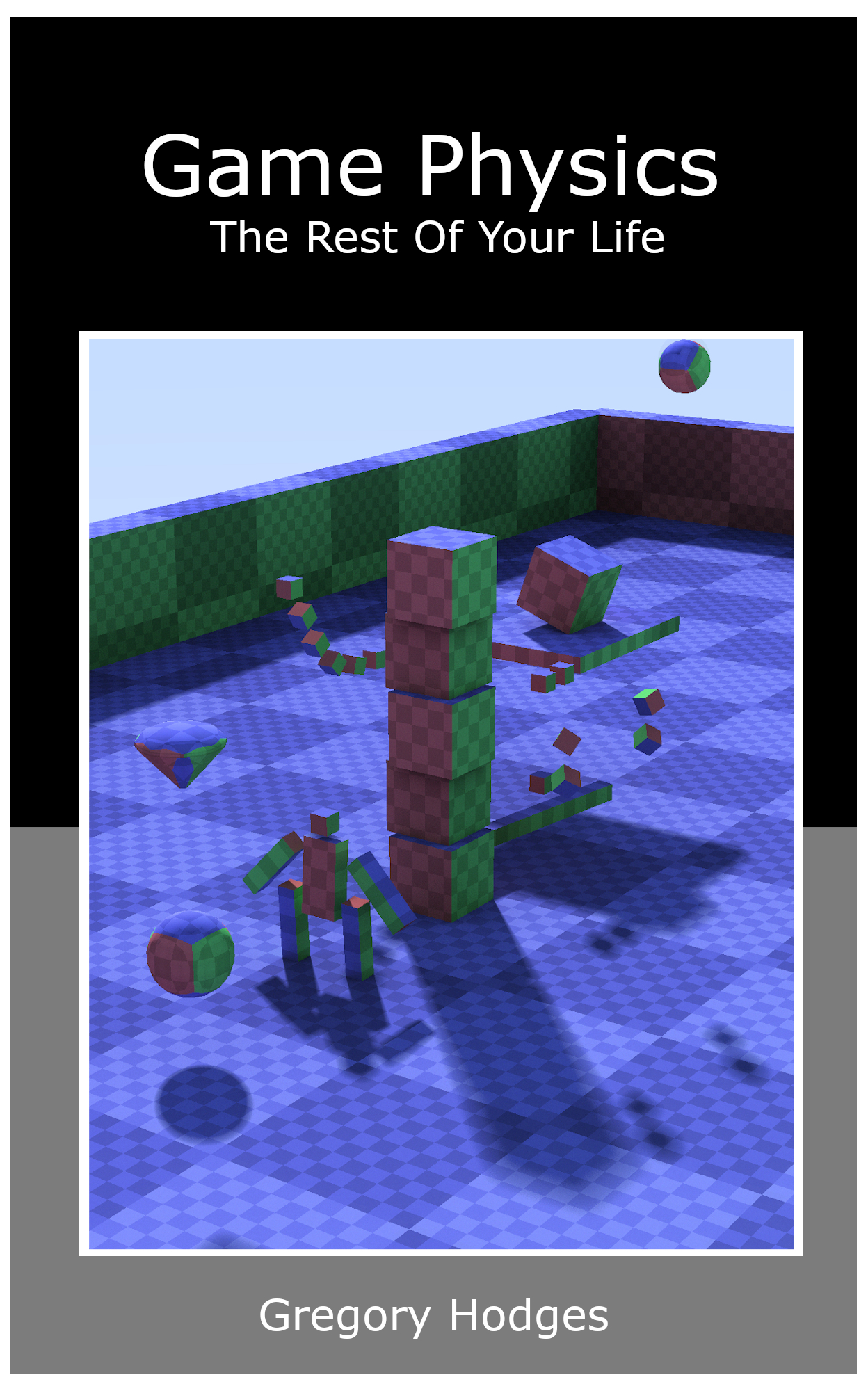Game Physics in One Weekend
Introduction
This book series was inspired by Peter Shirley's Ray Tracing in One Weekend. His books would instruct someone, with little to no knowledge of graphics programming, to build a working homebrew path tracer.
After reading his books, I thought there should be other series similar to that for as many subjects as possible. After all, when starting to learn a subject, often times the most difficult part is figuring out how to start.
The aim of Game Physics in One Weekend is to guide the reader through the process of building a real-time rigid body physics simulation for use in games. It is my hope that the process of hand crafting your very own physics simulation will demystify the subject.
Since this is a book on game physics, you will need a renderer. If you have one of your own, then excellent. If you do not have one, then I have a prepared a very meager Vulkan renderer.
The code in this book is written in C++. Because this is a book with intended application in games, I’m assuming that you either work on games or are a student aimed at working in the industry. And C++ is still rather ubiquitous for game development, so it is a natural choice for this book series.
Acknowledgements
I would like to thank Peter Shirley for both writing the Ray Tracing in One Weekend series and also granting me permission to use the same naming scheme.
Getting the Books
You can find these books for sale on the Amazon kindle bookstore.
If, however, you can't access them on kindle or would rather not support Amazon, then you can download them here for free.
Game Physics: The Rest of Your Life
Source Code
Source code for the Vulkan based renderer may be found in the GitHub repository: https://github.com/gamephysicsweekend/VulkanRenderer


